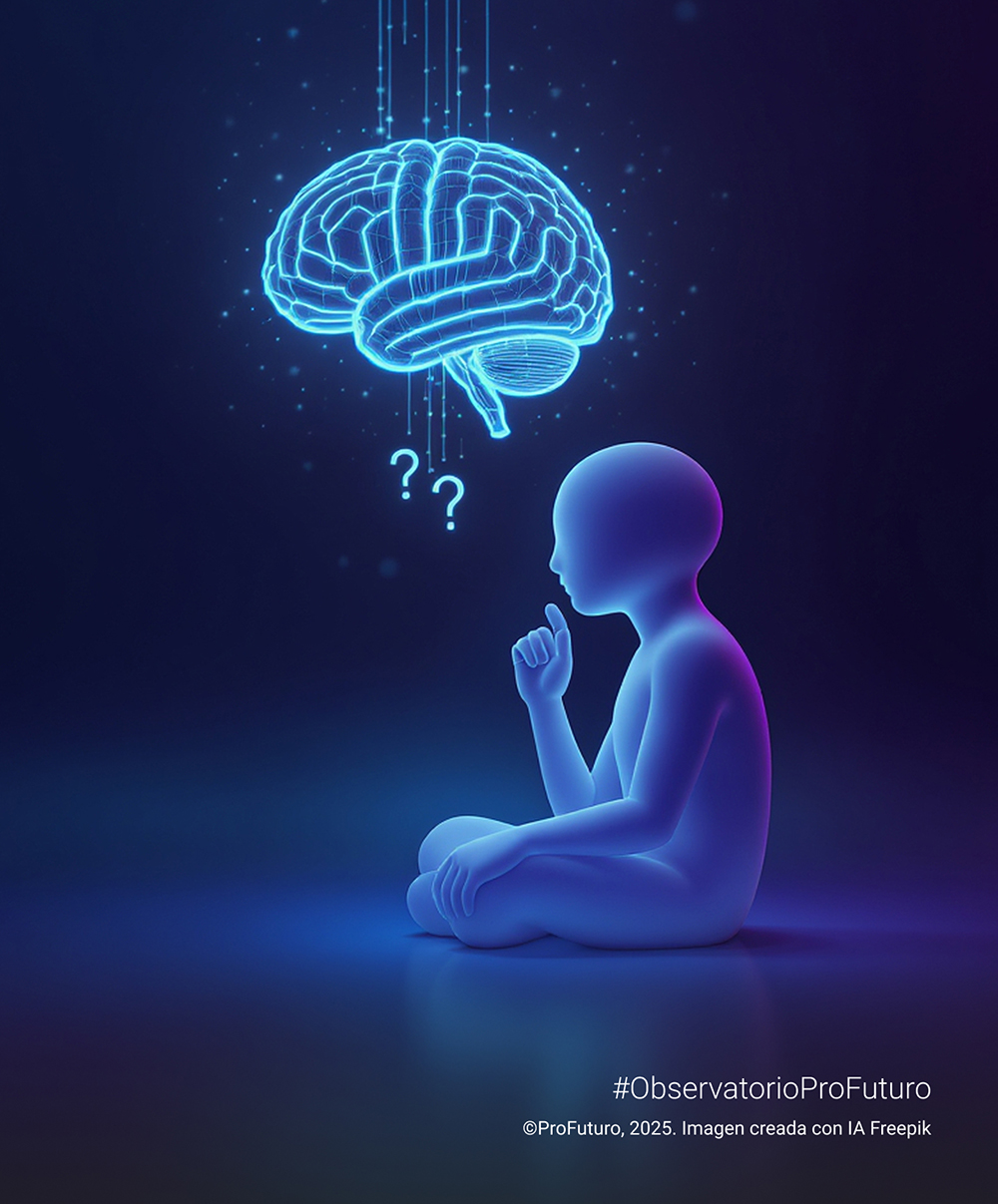TALIS 2025, the OECD’s major international survey on teaching and teachers, shows us, beyond the figures, how the teaching profession is being redefined in the midst of a changing era. More than 55 countries, thousands of schools, and hundreds of thousands of teachers have responded to the same implicit question: what does it mean to be a teacher today?

The results paint a picture of a profession that is both resilient and undergoing transformation. Teachers continue to feel satisfied with their work, but they live with a diffuse unease: growing bureaucracy, social pressure, technological uncertainty. In this edition, for the first time, artificial intelligence appears as part of the educational landscape, and with it come new questions about the meaning of human judgment and the place of the teacher in the digital classroom.
TALIS shows that teaching is no longer just about imparting knowledge, but about managing emotions, mediating with technology, and maintaining the cohesion of diverse communities. Schools have become a space where social demands, family expectations, and rapid cultural changes converge. And teachers, more than ever, are at the center of that storm.
The report paints a picture in which teaching appears as a profession in transition, seeking new forms of authority, well-being, and meaning in an uncertain world.
Teacher well-being at the center of the debate
TALIS 2025 confirms that teaching continues to be a profession marked by vocation, but increasingly strained by the conditions in which it is practiced. Thus, 89% of teachers say they are satisfied with their work, a remarkable figure that belies the idea of an unmotivated profession. However, behind this commitment lies a persistent unease: one in five young teachers plans to leave teaching in the next five years. This is not a new phenomenon, but it is perhaps more evident today than ever before.
The factors that explain this tension are structural. Administrative overload takes up time that should be devoted to teaching. Maintaining discipline in the classroom requires an emotional effort that is rarely recognized. Constant curriculum changes, external evaluations, and social pressure complete a picture in which the sense of control over one’s own work is reduced. The result is exhaustion. A precarious balance between work and personal life and a professional loneliness that cannot be resolved with good will alone.
Teacher well-being cannot be understood solely as an individual issue. It is also an indicator of the school climate and the health of the education system. Where teachers feel supported, listened to, and part of a community, innovation flows and results improve. When the environment becomes hostile or indifferent, teaching deteriorates, even if the curriculum and resources remain the same.
Leadership and autonomy: pillars of change
TALIS 2025 confirms a direct relationship between professional autonomy and teacher satisfaction. On average, 83% of teachers report having some degree of freedom to select teaching methods, but only 56% say they can influence broader school decisions, such as content selection or the organization of teaching time. This gap between classroom autonomy and system autonomy partly explains the feeling of limited control over their own work that many teachers express in the survey.
School leadership appears to be another key factor. In schools where the management team encourages collaboration and participation (according to the data, around 70% of teachers say they feel supported by their management), professional commitment and motivation increase significantly. Conversely, in contexts where decisions are concentrated at the top or imposed by external bodies, levels of stress and disaffection tend to increase.
The report also identifies a correlation between distributed leadership and pedagogical innovation. Schools with collaborative cultures, observed in around 40% of cases, are also those that report greater use of active strategies, formative assessment, and interdisciplinary projects. Participation not only improves the internal climate, but also enhances the collective capacity to adapt to curricular and technological changes.
However, TALIS warns that many education systems remain anchored in hierarchical structures. Latin American teachers, for example, are among those who perceive the least scope for participating in institutional decisions.
The message is very simple: the quality of teaching depends not only on resources, but also on trust. Teacher leadership cannot be decreed. It must be built through autonomy, recognition, and collaboration.
The future of education does not depend on more platforms or new programs, but on the conditions that make it possible to fully exercise one’s profession.
The digital leap: two perspectives on teaching competence
TALIS 2025 and the study by the IDB and the ProFuturo Foundation Approach to the digital competences of teachers in Latin Americashare a central concern: the gap between the discourse of digital transformation and the everyday reality of teachers. Both reports confirm that technology is now part of the school landscape, but its pedagogical appropriation remains partial, uneven, and, in many cases, intuitive.
A comparison between the two reveals differences in scale, context, and depth, but also the same paradox: teachers are expected to lead innovation without having received adequate training to do so.
In TALIS 2025, the average for participating countries shows that 80% of teachers use digital tools regularly, but only 43% have received specific training in their educational use, and only 28% feel prepared to integrate artificial intelligence into their classes. The report also finds that teachers who are trained in technology show higher levels of professional satisfaction, suggesting that digital competence also contributes to well-being and autonomy.
The Latin American picture described in the joint study by ProFuturo and the IDB is more severe. Out of a sample of 28,000 teachers in six countries, only 27% achieve a basic level in the pedagogical use of technology and 29% exceed the minimum threshold in digital citizenship. The strongest dimension is professional development (40%), indicating that many teachers use technology for their own learning, not to transform their students’ experience. The study also identifies structural factors: age, gender, educational level, and unequal access to ICT training.
While TALIS shows a global deficit associated with the pace of technological change, the Latin American report reveals a structural lag linked to inequality and a lack of sustained policies. In both cases, the message converges: the digital divide is no longer measured in megabytes, but in skills. True transformation does not depend on more technology, but on teachers who are able to use it judiciously, purposefully, and with educational meaning.
Artificial intelligence and humanistic pedagogy
TALIS 2025 introduces for the first time a systematic look at artificial intelligence in teaching. The results speak for themselves: seven out of ten teachers acknowledge having heard of AI applied to education, but only one in four say they understand how it works or have used it in any school activity. Interest is high, training is scarce, and uncertainty is considerable.
More than half of those surveyed believe that AI can improve learning by offering personalized feedback and freeing up time for pedagogical tasks; however, a similar proportion fear that it will reduce the role of human judgment and increase inequality between schools with different levels of technological access. Enthusiasm and mistrust coexist, reflecting a deeper tension: schools are entering the algorithmic era without having yet resolved their basic digital literacy.
The study also shows that teachers with greater professional autonomy and training support are the ones who adopt these tools with the most confidence. Where school culture promotes peer learning and ethical reflection on technology, AI is perceived as an ally; where misinformation or external pressure prevails, it is seen as a threat. Once again, the decisive variable is not the machine, but the professional community that integrates it.
TALIS leaves an implicit warning. If AI is introduced without pedagogical criteria, it runs the risk of replacing the teacher’s judgment with the logic of the platform. But if it is understood as a support, it can free up energy for what is essential: thinking, accompanying, and teaching discernment. The challenge is not to teach with artificial intelligence, but to train human intelligences capable of understanding and governing it.
Looking to the future: conditions for a sustainable profession
TALIS 2025 maps out a profession in transition. Teaching is based on a paradox: it is more necessary than ever and, at the same time, more vulnerable to fatigue, pressure, and uncertainty. The future of schools is at stake in this tension. We must make a profession that is in constant transformation sustainable.
The data points to three decisive conditions. The first is teacher well-being, understood not as an individual privilege but as a systemic indicator. Where teachers have reasonable time, emotional support, and social recognition, educational quality improves. In contrast, overload and instability erode both mental health and pedagogical innovation. Caring for teachers means caring for schools.
The second condition is professional autonomy. TALIS evidence shows that teachers who participate in school decisions and have leeway to adapt the curriculum develop greater motivation and a sense of purpose. Institutional trust is not imposed: it is built through participation and respect for the expert judgment of teachers.
The third is continuous training. The speed of technological change requires replacing the logic of one-off courses with a culture of lifelong, collaborative, and situated learning. Digital competence, critical thinking, and professional ethics must evolve together as inseparable dimensions of contemporary teaching.
The future of education does not depend on more platforms or new programs, but on the conditions that make full professional practice possible. In an education system saturated with reforms, TALIS reminds us of a basic truth: the quality of teaching is inseparable from the dignity of the teacher. That is where all educational transformation begins and ends.






